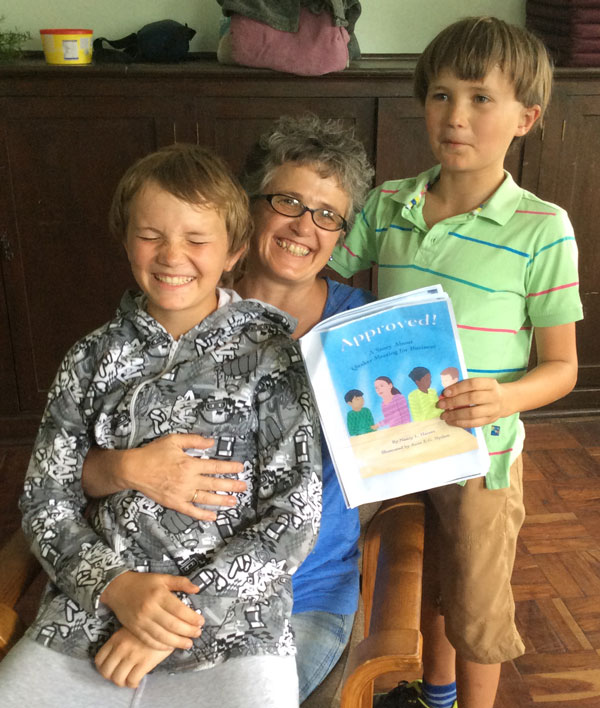Approved! A Storey About Quaker Meeting for Business
by Nancy L. Haines
Illustrated by Anne E.G. Nydam
Book Review by Amanda Gibberd, Pretoria Worship Group
Approved! Is a short children’s – style book about the Quaker Business methods used in running Quaker Meetings for Worship for Business. It explains, using the children of a fictional meeting, how they run their own version of Meeting for Worship for Business, and how they reach decisions.
It describes a decision making process in a Children’s Meeting, explaining the roles of the clerk, treasurer and recording clerk along the way. With pictures. The book shows how the Business process runs rather than trying to explain it. The children learn about the adult Meeting by doing what the adults do.
The book ends with some children’s-style queries (or questions to think about), and a glossary of terms that explain some of the terminology, perhaps the everyday terminology that Quakers use and may forget that new comers do not understand. Or people who have been to Meeting for a long time and never really thought about what they mean by the words they use.
The book explains what discernment means. I had been wondering about what it meant, having spoken in Meeting about it. The description in this book is short and direct; “a way of listening to God and one another in order to sense what is the best decision for the community.” So now I know, and it’s a good definition.
My children haven’t read the book yet, but I am glad we now have it in our meeting. I remember growing up with the blue book and the red book in Quaker Meetings in England. The blue book was interesting. It had quotes of what people had said in 166-something, and I was touched by their depth and thoughtfulness. Then there was the red book which was boring and I never opened it. Neither had any pictures, but the red boring book explained Quaker business practice.
It wasn’t until much later, joining Young Friends, that I began to appreciated, enjoy and really participate in Quaker Business Meetings, although I don’t think I would have called them this at the time. They were just too much fun and a wonderful way to help you feel as if you could participate in making a meaningful impact on the world. There was no hierarchy; everyone had value. That value was contributed by each member and appreciated by the others in the Meeting. People took different roles in the Meeting but those that didn’t take roles also made valuable contributions to decision making. I loved my time on Quaker Committees, it helped to change my life, for the better.
The note at the end of the book explains that it has been written based on an actual children’s Meeting for Worship for Business that runs at Wellesley Meeting, Massachusetts, USA. It explains how the Meeting has managed to set up and run the Children’s Meeting for Worship for Business separate from the adult Meeting, with a belief that children are able to participate, and will learn through participation. It explains that Meetings do not always happen as the book describes, and it would be interesting to know more about how the mentors then deal with the situations that go wrong.
Our Meeting would be too small to set up a separate Meeting, but it may be worth us considering how we draw children into Business Processes. The book describes a different way of looking at children, not as the children that they are, but the adults that, with guidance, they could become.
In Meetings where many people are new to Quakerism it would be helpful to have a way of describing how business Meeting should run. Southern African Meetings have a wide range of attendance of people from a spiritually and culturally diverse background. Perhaps there is some use in us considering how we should explain Quaker Processes to everyone, including adults as well as to young people who are not yet involved, and children.
— Amanda Gibberd

